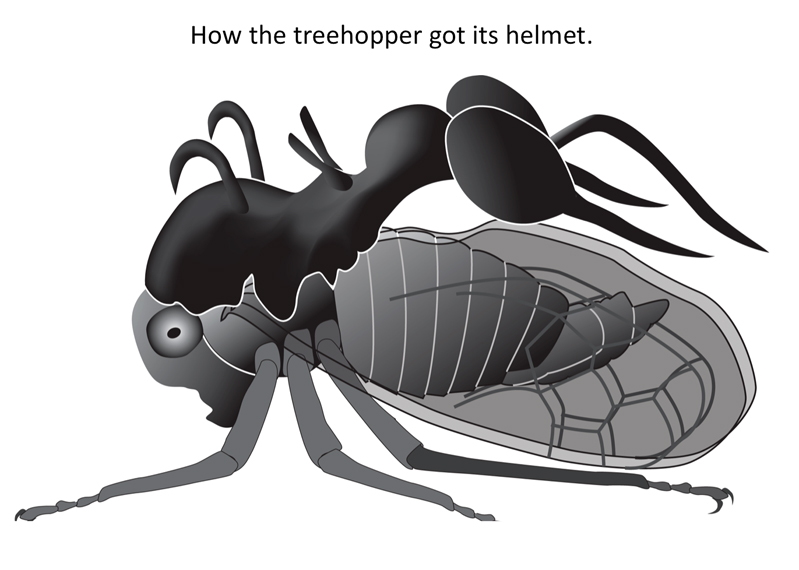| The ant riding backwards atop this insect is actually an outgrowth from the thorax of the insect itself. The outgrowth is called a helmet, and different treehopper species mimic other objects, such as thorns or dead leaves (as camouflage) or bird droppings (to appear unpalatable). This whole psychedelic menagerie evolved in only ~40 MY. Helmets appear to have arisen when Scr (the Hox gene for the 1st thoracic segment) accidentally activated genes that normally function in leg development (co-option) in a new place (heterotopy)—namely the dorsal thorax. Helmets probably started as freakish deformities that were free to 'explore morphospace' because they were harmless. Any shapes that happened to resemble inedible or repulsive things were rewarded by selection, leading to refinement and diversification by adaptive radiation. No other animal group better exemplifies the Darwinian dialectic between (1) the blindly groping, endlessly inventive, and eternally playful nature of mutations and (2) the context-dependent, obsessively demanding, and compulsively judgmental character of natural selection. In short, the genome proposes, and nature disposes. Some treehoppers stumbled upon a separate, nonvisual trick for deterring predators: they secrete honeydew (made from the sap that they suck) to attract ants, who return the favor by guarding (and 'milking') them like a herd of tiny, 6-legged cows. Those ants are the insect equivalent of cowboys. |
|
leopard | cheetah compared with butterfly | anglefish | zebra | mouse cloud leopard | giraffe | ant | beetle | treehopper stalk-eyed fly | ladybird | snake | The Interactive Fly resides on the web server of the Society for Developmental Biology. |


